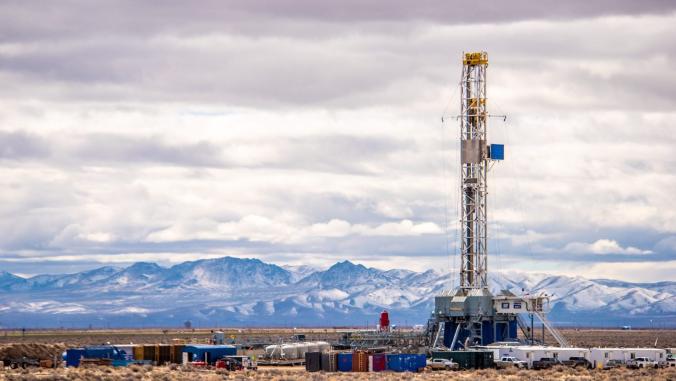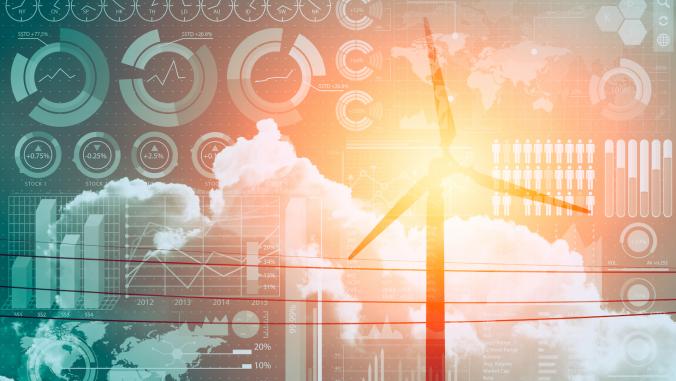Climate change poses the largest financial risk of our time.
Corporations face transitional risks, stranded assets and broken supply chains — but that’s just the start of it. At a societal level, the cost of extreme weather, rising sea levels and climate refugees is incalculable.
While the Biden administration will have an uphill battle embracing ambitious climate action without control of Congress, the president-elect can do much by simply aligning finance to address the risks associated with climate-fueling activities.
Here are three financial levers that could spur forward clean energy in America — with or without Congress.
1. Use the Treasury Department to signal financial risks
Janet Yellen, former head of the Federal Reserve and Biden’s pick to head up the U.S. Treasury Department, is a friend of the climate, and she explains it in her native tongue — economics.
As head of the Treasury, Yellen could add a climate lens to the administration’s tax, regulatory and budget policies. The rationale is climate chaos can hit banks’ balance sheets hard, so governments should consider fossil fuel infrastructure a liability — "as a risk to banking organizations."
"What I see is a growing recognition on both sides of the aisle that climate change is a very serious concern and that action needs to occur," Yellen told Reuters in October.
Yellen is a founding member of the Climate Leadership Council, a policy institute that advocates for a price on carbon with bipartisan support, and she signaled there may be a carbon tax under Biden.
"We need to price emissions, and there needs to be a price that penalizes emissions of greenhouse gases," Yellen said during a panel in February. "[The Climate Leadership Council] favor a carbon tax that would start off at around $40 a ton."
2. Employ the Dodd-Frank Act to protect consumers
In the wake of the housing crisis, Congress moved to protect consumers from risky financial practices, such as those associated with the subprime mortgage.
Enter the Dodd-Frank Wall Street Reform Act of 2010.
Among its provisions, the law empowered agencies — the Treasury, the Federal Reserve and the Securities and Exchange Commission — to limit systemic risks that could threaten financial stability.
Justin Guay, omnipresent climate activist and director for global strategy at the Sunrise Project, argues in GreenTech Media that this power makes the bill "one of the most powerful pieces of climate change legislation."
Through the power of Dodd-Frank, the Biden administration could slow fossil fuel projects and infrastructure (say, any of the 235 natural gas plants utilities are planning to build) by increasing capital requirements or lending terms from banks.
This wouldn’t be a stretch. The financial risks associated with climate change are well documented, even by the U.S. government, even under the Trump administration. The U.S. Commodity Futures Trading Commission issued a report in September that said, "Climate change poses a major risk to the stability of the U.S. financial system and to its ability to sustain the American economy."
As Biden inherits a historically bleak economic climate, the money the U.S. government will inject into the economy will be subject to these rules. That means clean energy will become even more financially attractive quickly.
3. Embrace policy priorities that offer hints for investors
The exodus of finance from fossil fuels to renewables already has begun — and it accelerated during the Trump administration, despite Trump’s support of dirty energy.
That’s because renewables are simply performing better than dirty energy. According to the International Energy Agency, solar is the "cheapest electricity in history," with the marginal cost of fuel at zero. The result, according to the Wall Street Journal, is clean energy significantly outperform dirty energy stocks.
Increasingly, investors large and small are moving their money to clean technologies — out of principle and prudence. Today, one-third of all U.S. assets under management take into account environmental, social and governance (ESG) investment analysis, a 42 percent increase over 2018. That feeds a virtuous cycle; the influx of capital drives the cost of technology down, which makes investments more attractive.
The Biden administration can accelerate this financial transition (even without the support of Congress) through regulations and executive orders. In addition to the actions from the Treasury Department and enforcement of Dodd-Frank that will make dirty energy projects less attractive to investors, Biden could create more barriers to new dirty energy projects, such as restricting drilling on public lands.
Also, what kind of investor would want to invest in expensive infrastructure when the president says we’re going to transition away from it?
This essay first appeared in GreenBiz's newsletter Energy Weekly, running Thursdays. Subscribe here.






